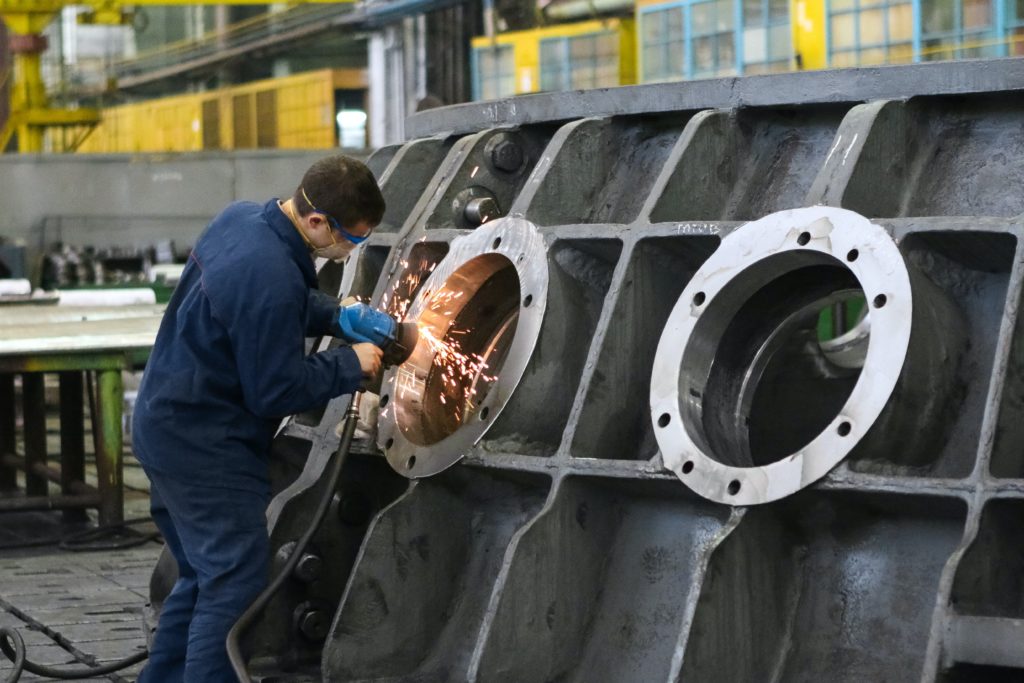Manufacturing has always been one of the strongest industries in the Midwest region of the United States. In fact, the employment share of production in the Midwest is about one and a half times the national average with even stronger numbers in states like Indiana and Wisconsin.
Many Midwest states are known as manufacturing hubs, such as Ohio, where foundry mold and coremaker occupations are over four and half times the national average. Michigan’s concentration of metal and plastic model makers jobs is almost 9 times greater than the national average. Meanwhile, meat, poultry, and fish cutters and trimmers occupations in Nebraska are at 9 times the national average, and the concentration of aircraft structure, surfaces, rigging and systems assemblers are 22 times the national share in Kansas.
The manufacturing culture runs deep in the greater Midwest, with the region commonly being referred to as the industrial heartland of America. Like most industries, manufacturing has been negatively impacted by the pandemic, but most experts believe that the industry will be restored in the coming years in the region. Before the pandemic began, manufacturing was on an upslope spurred by the federal trade barriers with China, which created a drive to bring manufacturing jobs back to the US, more specifically the Midwest. However, when the COVID-19 pandemic hit the US, manufacturing took a hard hit, and now in 2022, still has not fully recovered.
Some of the main issues that are affecting manufacturing caused by the pandemic include supply chain delays, staff shortages, rising prices of raw materials, transportation issues and inflation.
The supply chain issues have impacted all Americans who are seeing inflation in everyday purchases and common products. Although it is not the only industry that has been impacted by supply chain disruptions, manufacturing relies heavily on the supply chain to get the materials needed to produce.
When manufacturers need to procure materials to produce their products, this inflation has an even more severe effect. For example, the price of steel, a very common manufacturing material, has risen 215% since March of 2020. In addition to the escalating prices of raw materials, supply chain issues have also played a role in the drastic rise of shipping prices. Shipping prices continue to rise to extreme levels, with the price of a standard 40-foot shipping container topping more than $11,000 in recent months. Before the pandemic hit, these same containers cost just $1,300.

In addition to all the problems manufacturers are facing from supply chain disruptions, staff shortages have also impacted most manufacturing companies in the Midwest. When the pandemic first hit, many manufacturers were forced to slow production, and in turn had to reduce their staff. Employment has been on the rise since the start of the pandemic, but recently many manufacturers have had to deal with COVID outbreaks in their facilities which have caused employees to have to stay home. This has led to delays in production and caused major disruptions to many Midwest businesses.
Although Midwestern manufacturers have had to deal with many issues caused by the pandemic, it is finally starting to look like the worst of the pandemic is over and things are slowly returning to pre-pandemic norms. Experts believe that in the coming years, production will be restored to 2019 levels and will continue to grow from there.
The COVID pandemic proved how vulnerable the supply chain can be, and there has been a large push in recent years to grow local manufacturing. This trend will likely continue, and as more and more companies begin moving offshore production back to the Midwest, the industry will experience steady growth. Nothing is certain, especially these days, but most experts agree that Midwest manufacturing will remain a stronghold in the region for years to come.

